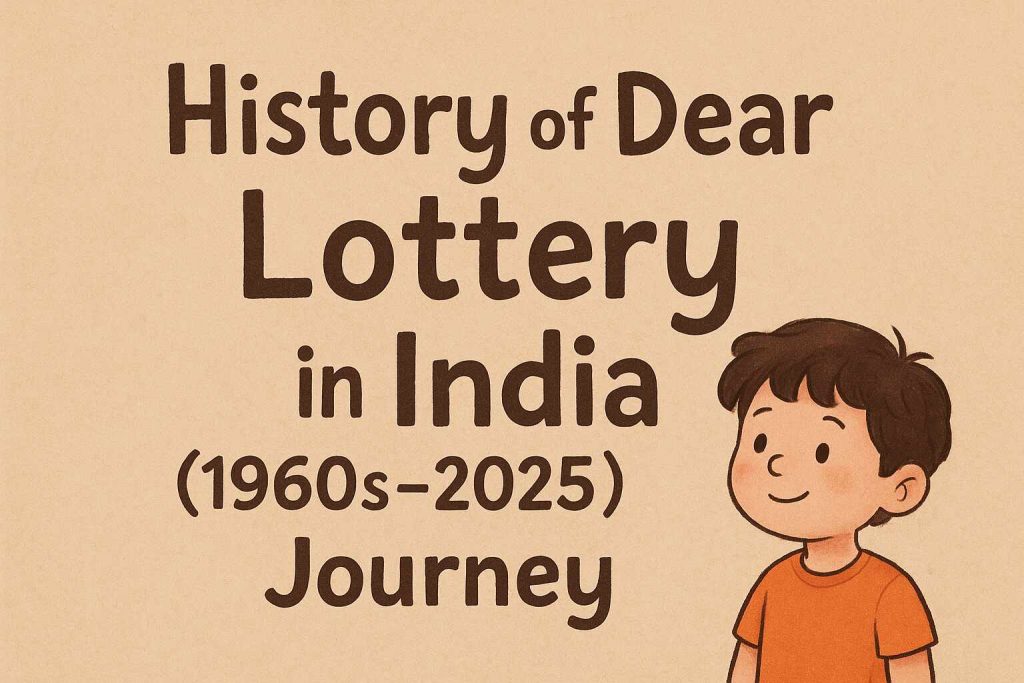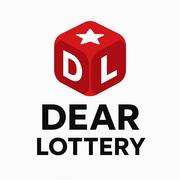Learn the entire history of Dear Lottery in India from 1960 to 2025. See how it started, grew, got fame, and grew into one of the lottery brands in India.
Have you ever asked yourself how the Dear Lottery came to be so widely known all over India? The path of the Dear Lottery is not only about tickets and prizes. It starts with little pieces of paper in the 1960s and goes up to large digital draws in 2025. It is a tale of hope, regulations, fraud, winners. And how the lottery culture in India is changing.
The Early Beginning of Lotteries in India – history of Dear Lottery
Indian lotteries have never been just a game of chance. They come with dreams of people, stories of sudden wealth, and even teachings on money. Lotteries were also present in India than the Dear Lottery. During the 1960s most of the states started the lottery to collect the money to support welfare projects. They were state-run, legal, and governments.
The idea was super simple: sell tickets that didn’t cost much, pick winners in a draw, and then use some of the money as a prize for people.
During this period, the lottery tickets were hand printed and sold. They became popular because:
- Tickets were cheap.
- People were ready with the fairness of the government.
- Winning was a thrilling experience.
This piece of paper is a tour of the entire history of the Dear Lottery in India. All the way back from its first step to the current era 2025.

Birth of the “Dear Lottery”
When various Indian states started to name their draws in different ways. The Dear Lottery brand was introduced into the picture.
The word “dear” quickly caught everyone’s eye. Because it felt friendly, warm, and kind, like someone cheering you up with a smile. The name slowly spread in most states like Nagaland, Sikkim and West Bengal.
Growth in the 1980s and 1990s
The Dear Lottery draws increased in the 1980s and 90s. People came to shops to purchase tickets as a consequence of posters, newspaper advertisements, and radio announcements. Winning numbers were given in the newspapers and shown outside the ticket shops.
In this era:
- Several draws per day were launched.
- Prize money increased.
- Dear Lottery was known to be reliable and open.
This was equally in the time when most of the first-time winners turned out to be the local heroes. Their stories were spreading faith and thrill.
Dear Lottery in the 2000s – Technology Enters
The 2000s came with computers, scanners, and faster printing. Dear Lottery started:
- Printing and numbering of tickets by using digital systems.
- Putting the results on notice boards fast and then later online.
- Increasing the selections – morning draws, evening draws, bumper lotteries.
At this point, Dear Lottery had become a household name in the Indian lottery culture.
Regulations and Rules That Shaped Dear Lottery
In India, a big rulebook called the Lotteries Act, 1998 was made. It worked like a guide where the government wrote down clear rules. Saying how state lotteries should happen and what was allowed or not. So everything stayed fair and safe. This law influenced the way the Dear Lottery was operated. Key changes included:
- Lotteries could only be funded by state governments.
- Online lotteries were controlled.
- Pricing on tickets and prize structure were uniformed.
- These laws made the Dear Lottery more reliable and not easy to duplicate by fraudsters.
Digital Shift in the 2010s
The 2010s changed everything. The availability of smartphones and the internet allowed information to be more spread. Dear Lottery adapted by:
- Posting of official results on state websites.
- Faster updates by using SMS and WhatsApp groups.
- Digital result checking of players.
Meanwhile, there also start to appear fake websites and scams. But the real Dear Lottery did not lose its faith. As it continued with state government draws alone.
Dear Lottery in the 2020s – Big, Smart, and Popular
The 2020s were a time of challenges and chances. The physical ticket sales decreased due to the COVID-19 attack, yet Dear Lottery was able to live. People began to buy tickets in socially distanced fashions, and result checking turned into nearly entirely online.
By 2025, Dear Lottery became:
- A multi-state trusted brand.
- Known as a weekly bumper draw with life-changing prizes.
- common practice in Indian households particularly in states where lotteries are legal.
The Cultural Impact of Dear Lottery
The Dear Lottery is not all about money. It represents:
Dreams: Every average citizen considers a lottery ticket to be the opportunity to change their life.
Community: Community draw days: This gathers people together and they await the outcome.
Hope: Those who lose it feel excited and positive.
Challenges Faced Over the Years
Problems that have been experienced over the years.
There were also issues with Dear Lottery although it was successful:
Frauds: bogus calls and websites defrauding individuals.
Dangers of addiction: There were players who went overboard.
States that prohibit them: Not every Indian state permits lotteries.
But the Dear Lottery managed to survive as the government supported, transparent and trusted by many.
The Dear Lottery in 2025 – Where It Stands Today
By 2025, the Dear Lottery still:
- Hold makes several appearances in a day.
- Publicize findings in official state websites.
- Provide bumper prizes during the festivals such as New Year, Holi and Diwali.
It is still one of the known and esteemed lottery brands in India.
It remains one of the most recognized and respected lottery brands in India.
What the Future May Hold
In the future, Dear Lottery may:
- Discover buying safe online tickets.
- Check your tickets with the help of blockchain or QR codes.
- Call even larger crowds and retain its traditional appeal.
Conclusion
The story of Dear Lottery is an adventure of hope, rules, technology, and millions of dreams. It has stayed a trusted name from the 1960s. When tickets were printed by hand, all the way to 2025, where the draws are still kept safe and fair. Even a simple lottery can carry years of stories, trust, and people’s feelings, and its long history shows us that clearly.
FAQs
Q1: What was the date of the Dear Lottery beginning in India?
The popularity of the Dear Lottery brand rose in the late 20th century, particularly when it was introduced by states such as Nagaland and Sikkim.
Q2: Is Dear Lottery legal in India?
No, but then only in those states where the lotteries are legal according to the government regulations.
Q3: What is the way players may examine Dear Lottery results today?
The results are posted at the official websites of state lotteries, registered stores of the lotteries, and local newspapers.
Q4: How is the Dear Lottery superior to others?
It is unique in its trust, long history, and governmental draws.
Q5: Does Dear Lottery intend to fully go digital in future?
Possibly yes. In the future, there can be digital tickets in addition to the draws with QR codes and using secure apps.
